
Even the least experienced salespeople admit that getting leads is simple. But it is the real art to turn those leads into buyers.
According to WordStream blog post, a typical website conversion rate is about 2,35%. Although, the top 10% of companies with excellent marketing strategies get 3 to 5 times higher conversion rate. If you are not one of those, you have much space to grow.
One of the secrets of turning a lead into a client is to convince them that your goods or services are exactly what they need. And to achieve that, you must be aware of what they actually need. Yep, simple as that.
To receive more information about your potential customer, strive to bring up powerful open-ended sales questions. More questions lead to greater chances to get valuable information. In addition to putting proper queries, you must motivate your respondents to reply. People are tired of boring surveys leaving them with a “nobody-really-cares-what-I-think” aftertaste.
You should be different from your competitors. Aim at building trust and understanding people and not just convincing them to buy your product or service. Trust is the key to winning those loyal customers you’ve always wanted to have.
In this post, we will cover all aspects regarding open-ended questions for sales that will help you boost the number of your deals.
1. What are open-ended questions in sales?
Here is an interesting observation by Sales Hacker: when your likely customer talks for at least 30% of the time, sales conversion rates improve dramatically. And vice versa, if your likely customer talks less than 30% of the time they spend with you, conversion rates go down.
You don’t need to be a rocket scientist to realize that you must do all you are capable of doing to make your clients TALK. The best method to encourage them to chat is to display interest in what they have to say. How? By settling proper queries.
Objectives of open-ended questions
Queries which don’t have any special structure and don’t require a candidate to respond in a specific way are known as open-ended questions. They are aimed at motivating the potential buyer to voice what he thinks or feels, specify particular issues, and provide the seller with meaningful information.
Here is an illustration of an open-ended query:
“What was the greatest thing which happened to you last year?”
Most likely, your potential client will say more than one word to respond to this question.
Compare with:
“Did anything special happen to you last year?”
In this case, the reply will be either “Yes” or “No”. It is unlikely that your potential client will say more.
Why ask open-ended questions in sales
This type of queries is aimed at several issues:
- They provide you with a better idea of who your potential customer is;
- They play a significant role when you are trying to establish trust with the likely client;
- They spark meaningful conversations.
However, remember that such questions result in long discussions. Also, they are not good for receiving particular answers from your candidates.
For example, if you want to find out whether your potential client likes reading, you don’t ask what his favorite genre is. You’d better ask:
“How often do you purchase books for yourself?”
or
“Why do you usually purchase books in retail stores/online?”
What information can you collect when asking open-ended questions in sales?
Such queries help sales professionals:
- Explore customer needs;
- Learn the buyer’s objections;
- Build trust and understanding;
- Foresee and minimize risks;
- Create new sales opportunities.
There are certain features which make open-ended questions different special:
- To reply to the query a person needs to ponder and reflect on the issue;
- The reply is based on ideas and opinions, but not facts;
- Open-ended questions usually allow dialogues between the vendor and the buyer.
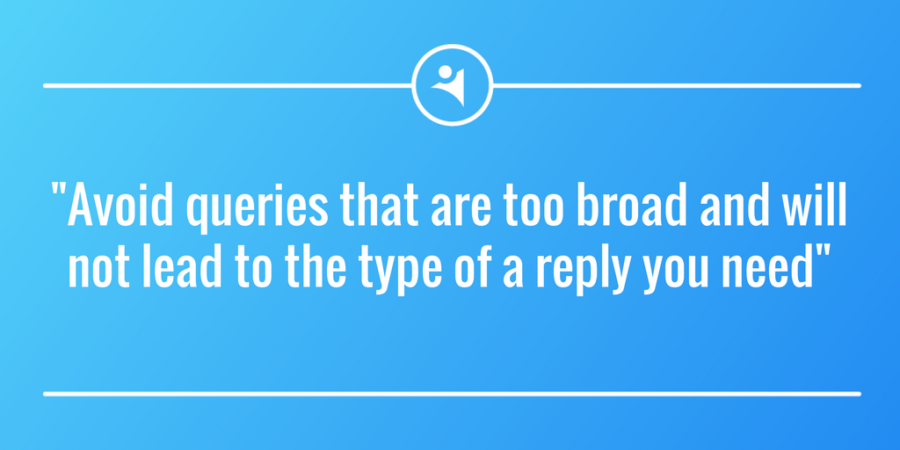
For example, if you ask “Which result do you expect if you implement this solution?”, most likely, you will not get the answer you’re interested in. Especially, if you are looking for insights regarding timing and budget. You should add some structure, otherwise, your client might talk about things not related to your topic.
Of course, you need some practice to develop the best open-ended sales questions and use them successfully. But once you learn that, you won’t regret spending time on them. Great sales will be a good reward.
When to ask open-ended sales questions?
You can appeal to such queries throughout the whole dialogue with your lead. They work great at the start of your conversation when you get acquainted with your likely customer and need to gain their trust. They are perfect to collect information.
Consider some ideas from Sales Strategy Workshop on when to ask open-ended questions:
- Exercise them whenever you are eager to receive a thoughtful response;
- Exercise them if you mean to receive unfiltered replies;
- Exercise them whenever you are sure that the answer will give you more insights.
Nota bene, avoid appealing to open-ended questions if you intend to sustain control over the conversation with your client.
2. What to do when asking good open-ended sales questions?
The hardest part about running this type of queries is not to turn into a soulless robot. Otherwise, you will ruin the very essence of your dialogue – building trust.
While asking open-ended questions, make sure you:
1. Encourage your potential client to unveil more and do not interpret their answers
Imagine you are interviewing a star or a guru and you’ve got a limited amount of time to talk to them. You are eager to get as much information as possible, so you strive to ask more open-ended questions and encourage your interviewee to chat more. Later, you’ll have time to analyze the answers. But right now concentrate on getting them.
Consider having some scheme of subsequent queries which motivate your likely customer to share more. For example:
-
“What was your biggest and/or best purchase last year?” – the question is somewhat general and your candidate might need time to respond;
-
“What problems did this purchase help you resolve?” – this is a more specific question;
-
“How did you benefit from this?” – even a more specific question which gives you a chance to include your goods or services into the dialogue.
Go from a broad perspective to a narrower one. This will help avoid interpretation and will encourage your customers to provide more information.
2. Show curiosity. No matter what your customer says
Best salespeople are usually good listeners. And they are always curious about other people. This is in their nature.
If you are curious about your customer, they will feel it and will be more likely to share their problems and thoughts with you. Genuine curiosity will help build trust since a client will feel that you care.
Be aware that you will get an opposite result if your customer feels that your curiosity is fake and the only thing you want is to sell them something. Needless to say, you will hardly manage to do that. That is the reason why you should do everything possible to display a real interest in your client. Even if what she says has nothing to do with your goods or services.

3. Make your questions and answers personalized
Avoid being too general when scripting open-ended questions for sales. It is obvious that people tend to chat more when answering personalized questions.
Personalize your questions according to:
- The person’s business (name, amount of people working, challenges);
- The stage of the sales pipeline your customer currently is at;
- The scope of your dialogue (don’t jump to other subjects).
Also, avoid asking the same questions you have already asked in a previous conversation.
4. Remember to stay quiet when necessary
You may think that salespeople are real chatterboxes. Well, not the best ones. Those who sell a lot possess the skill of “strategic silence” or practice the strategy of what Michael Hyatt calls “dead air”.
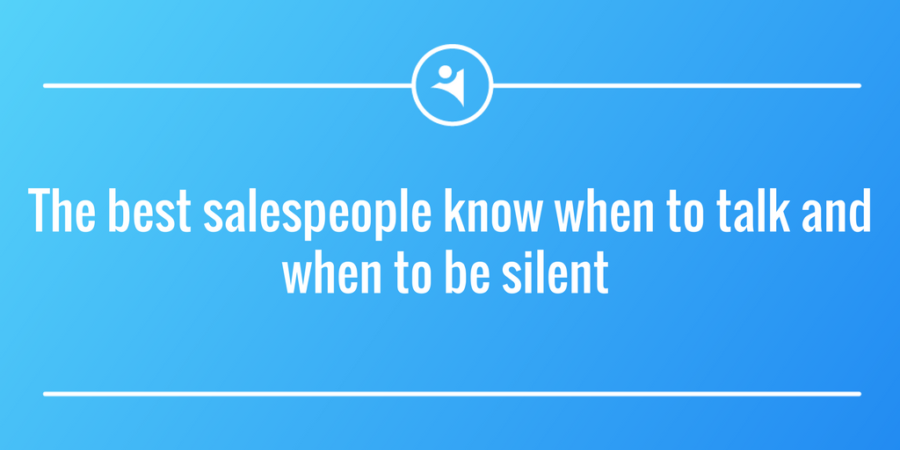
They keep quiet when necessary and let their clients share more.
For example, your client shares her experience in hiring people and then she stops all of a sudden. Give her some time to think and tell you exactly who she wants to tell. You will be rewarded with worthy information.
How do you understand when to stop? Well, trust your intuition and rely on your experience. Usually, it is better to say nothing than to say too much.
3. What not to do when asking good open-ended sales questions?
Yes, it is necessary to know what strategies to use to master open-ended questions. Nonetheless, it is equally important to be aware of the crucial mistakes which undermine all your hard work. We all know how frustrating that is to labor over something and get nothing at the end all because of a silly error. In order not to find yourself in such a situation, let’s have a look at some typical pitfalls to be avoided:

1. Don’t interrogate your client
Yes, you should have a set of great open-ended sales questions before approaching your potential clients. But please don’t bombard them with those questions without contributing some lightness to the dialogue. We bet you don’t want your customers to get that awful feeling of being interviewed as if by an impersonal automatic caller, do you?
Your client will simply close up and both of you will waste each other’s time. Nobody likes to be interrogated.
An effective tactic is to mix open-ended with closed-ended queries plus add some jokes or unrelated stories. This will make the whole conversation more informal and trustworthy. Help your customer relax and she’ll be ready to reveal to you more than you expect.
2. Don’t give the same comments to each answer you get
It feels just terrible when someone you talk to exclaims “wow!” or “how interesting!” all the time. I mean ALL THE TIME no matter what you say:
“I think this thing is good” – “Wow!”
“I probably need to know more about how it works” – “How interesting!”.
Fake enthusiasm is annoying.
Majority of people will feel that you are not sincere and… they will close up.
It is strongly advisable to listen to all the answers carefully and react appropriately. And it is simple if you are really interested in what your likely customers say.
3. Don’t reply to your own questions
You have probably talked to several customers already. Or you may have your own opinion on the topics you raise in the questions. But remember, when you are talking the whole time, you will only hear yourself talking. And if you are listening, you’ll hear your client, who is more important to your sales.
For instance, you can ask:
“What was the best thing which happened to you last year?” – and then say something like
“the previous customer said the best thing was X”.
Your customer might have a different answer, but once she hears about X, she might also say “X”. The best thing is to keep other opinions to yourself. Give your client a chance to speak their mind.
4. Don’t rush your clients with answers
Each salesperson has their business goals. And we get it, some of those are time-bound. However, no matter what the time-pressure is, it never justifies poor interviews with potential customers.
The costliest mistake you can make is to jump from one question to another and not let your customer say everything she wants. You may lose valuable information and waste a chance to build trust with your client.
Also, people tend to return to previous questions when they have something more to say. Give them an opportunity to do so and a chance to yourself to find out more about your clients.
5. Don’t forget to listen to your client
The most experienced and successful salespeople admit that a huge part of their work is about merely listening to customers.
And we don’t mean simply hearing words. You must learn to listen actively and understand what your client has to say. Stay engaged for the whole conversation. Your client will appreciate that.
Do not underestimate the meaning of listening. Otherwise, you will destroy the very essence of open-ended questions.

Image Source: Center for Creative Leadership.
6. Don’t offer a solution
You may be a great problem solver in life and have a piece of advice for any situation. But when it comes to open-ended questions, you might need to forget about this valuable quality of yours for a while.
You should target at learning about your client as much as possible and (maybe) later offer them a solution.
Besides, if you ignore the impulse to advise at this stage, you might get a better insight on how to help your clients. This will offer a good bonus to your sales.
4. What are the questions you shouldn’t ask?
Let’s face the truth: most of the salespeople are annoying. Their goal is to sell and not to be an attentive listener, eager to help with asking the right questions. And your potential customers are well aware of that. Naturally, they do not want to talk much to salespeople even when they are in need of buying something.
Why? Most often because of the questions salespeople ask. According to the author of “Game Plan Selling System” Marc Wayshak, even a neutral “How are you?” is actually killing your ability to sell.
If you are eager to be different from the majority of salespeople and become one of those that close dozens of deals daily, you’d better avoid bringing “bad” open-ended questions.
Pay attention to these examples of open-ended questions for sales which won’t work well:
1. How much are you willing to spend?
Most likely, you will not get an honest answer. Go with an assumption that your client has the money to buy your goods or services (you just need to convince him to do so).
As Ian Altman claims in his article for Forbes, your best buyer is the one who has already thought of a way out. And once you offer them something better, they will be ready to pay more.
2. What is your worst pain?
Your client may say something like “If I don’t find a solution, I won’t get promoted”. Eventually, the biggest pain is not the fact of not being promoted. It is in the emotions which your customer will experience if he does not get a better position.
3. What do your clients say about the quality of goods or services you provide?
It is unlikely that your potential partner will pamper you an honest answer. Even if his products are not good and you can provide with the simpliest way to change that. It hurts to admit you are not good at something.
4. What kind of goods or services are you ready to pay for?
It is clear that your final idea is to sell. But don’t underline it! Your client will get a feeling that the only thing you want is money and not solving their problem. Show value first.
5. What can I do for you?
That’s another bad question which shows your incompetence. The best way to figure out how you can solve your client’s problems is by settling proper queries. And then give a solution. Don’t give your potential buyer a chance to dictate you what you should be doing for them – this is far from an effective partnership.
6. What don’t you like about our service?
This question is simply amateur. Still, the majority of salespeople ask that. It is clear that you want to know the answer to this question to underline that you are great at solving problematic issues. However, it is better to concentrate on your strengths from the very beginning and present them to your customer without speaking about the flaws.
7. Could you tell me more about your business?
This query shows that you did not even bother to find any info about the customer’s business before presenting them your service or product. Even if you get deeper information (which is unlikely), it won’t help you close the deal. So why don’t you ask questions and encourage sharing instead?
5. False open-ended questions
Asking such questions is the real art. The good news is that you can learn it!
You should master the skill of seeing the difference between real open-ended questions and masked closed ones. These are so-called “false” open-ended questions.
Compare the following:

See the difference?
When answering the first question, your likely customer may simply say “Yes” or “No”, which is not what you need. But if you include the second question, they will definitely give you an idea of where to lead the conversation.
As you could’ve guessed, the second question is a good example of an open-ended question. While the first one might only seem open-ended but in fact, it is not.
Open-ended questions require your potential clients to think. And the answers will be their feelings, ideas and personal insights rather than plain facts. Such queries encourage your customers to express their opinion.
So, take that into consideration before you ask an open-ended question, as well as make sure your client has no chances to answer with elementary “Yes” or “No”.
In this YouTube video, Fius van Laar brilliantly demonstrates the difference between the open- and closed-ended questions. Also, he explains why using the former instead of the latter is by far a better strategy.
Tips on how to create right open-ended questions
Before we proceed to the list of perfect open-ended questions, let’s have a look at some pieces of advice on how to make them. Asking good opened-questions does not require some extraordinary skills. All you need is patience, persistence and time to learn how to use them appropriately.
To be sure you are doing OK, use specific language when making open-ended questions. Start your open-ended queries with question words like “why”, “how”, and “what”, or phrases as “Tell me about…”Sometimes, they are not really questions, but statements which encourage to give a response. To answer those, your client will need time to think.
Avoid starting your questions with such verbs as “are”, “was”, “did”, “didn’t”, “if”, “will”, “won’t (those work for close-ended questions). Most likely, you will hear a simple “Yes” or “No” which won’t give you any helpful insights. Waste of time!
6. Best 25 open-ended sales questions
By this moment you should possess a clear idea of what open-ended questions are, why you need those, how and when to refer to them. Let’s take a moment to talk about top open-ended sales questions which will help you build trust with your customers, get as much information about them as possible, and close the sale.
Before calling or talking to your likely customers, it is advisable to have a list of open-ended questions for sales you are going to raise.
The best thing is to arrange them according to the structure provided below:
Queries about buying history:
- What kind of experience did you enjoy when used this type of product?
- Why did you decide to buy this particular item?
- How did you buy this item?
- What measures did you take to cope with these challenges (if any)?
- Whom did you consult before deciding to make the purchase?
Queries about building trust:
- How’s your business?
- How’s your family?
- What is on your mind?
- What did you do during your vacation?
- What do you plan to do on holidays?
Queries to define wants, goals, and barriers:
- What are you most concerned about?
- What results do you expect to see/ achieve?
- What is the biggest obstacle on the way to reaching your goals?
- Why are you so sure this is the right (wrong) time to change it?
- What can help you go forward with the project?
Queries to work with objections:
- What are your thoughts so far?
- What other issues do you think we should discuss before we go further?
Queries to define the potential effect of your services or goods:
- If you make these changes, what do you believe the outcomes will be?
- What will the reaction of your boss be if you find a way out?
- How will the solution influence you personally?
Clarifying queries:
- Could you get deeper into this?
- Can you specify this?
Closing queries:
- When do you want me to call again?/ When do you want to meet again?
- How are decisions taken in your company?
- What do we need to be aware of/ do to do business together?
7. Good questions – good sales
The understanding of your potential customers will strongly influence your sales. The only reliable way to get this data is to motivate your clients to talk about themselves. You should learn to work with open-ended questions. Sales professionals tend to receive more information about their potential buyers and eventually close more deals.
In his vlog, Ago Cluytens is speaking about the importance of the proper open-ended questions and how your business can benefit from asking them. Also, he’s sharing top 5 questions, that he finds particularly effective.
Setting proper and relevant queries help to develop trust and reduce objections. Do everything you can to make your likely customers chat about challenges they face and offer solutions to make their lives better.
Enjoy your conversations with clients and close as many deals as possible!

Originally published at NetHunt CRM Blog.












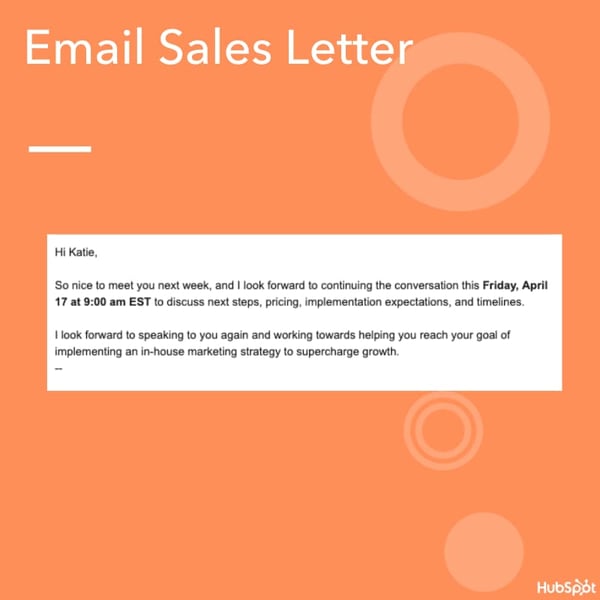
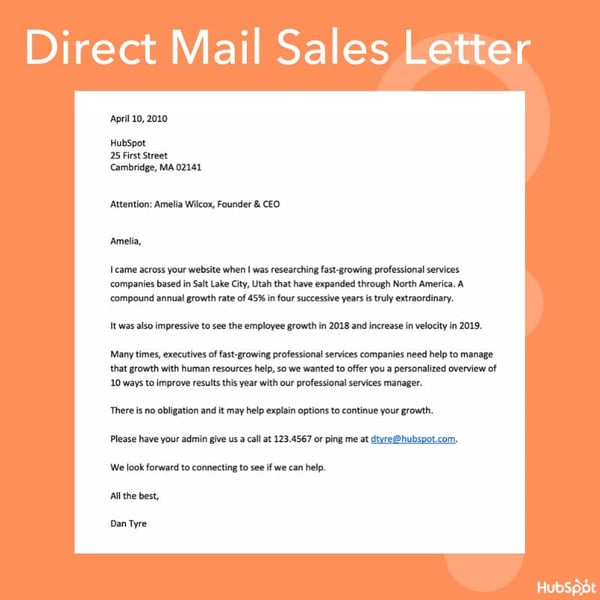

![Download Now: The Ultimate Guide to Business Communication [Free Guide]](https://no-cache.hubspot.com/cta/default/53/a7ff318c-b341-4687-b4d8-4b4c98745451.png)
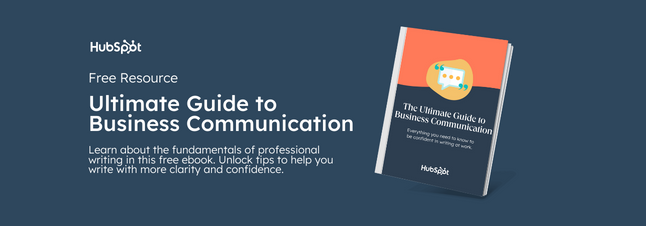


 So, does it matter if your white papers or ebooks or case studies are downloaded but not actually consumed? My answer: no, it doesn’t.
So, does it matter if your white papers or ebooks or case studies are downloaded but not actually consumed? My answer: no, it doesn’t.





















